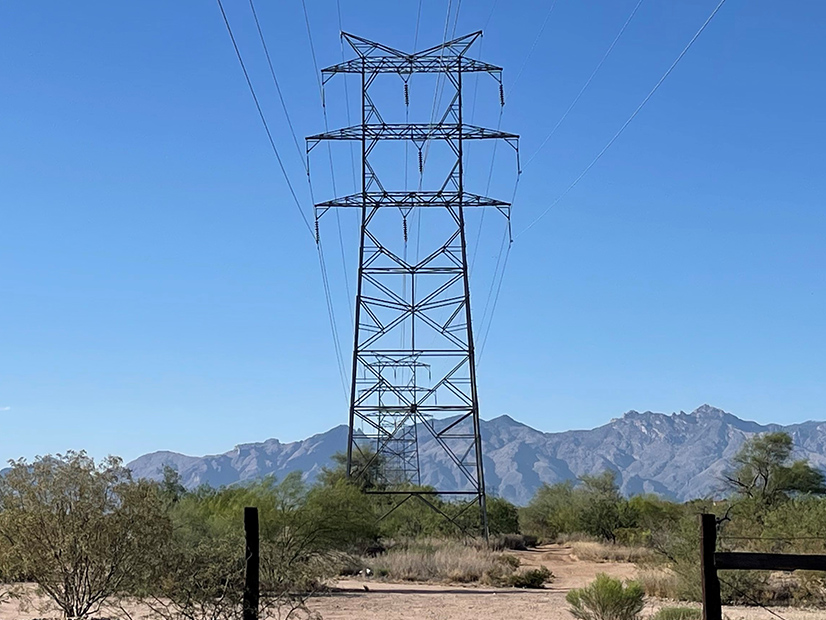
CAISO on Wednesday began a series of stakeholder meetings to deal with a surge of interconnection requests by focusing on generation and storage proposals more likely to meet California’s reliability needs and climate goals.
The ISO received a record 544 interconnection requests totaling nearly 350 GW during its Cluster 15 application window in April. That was five times the average number of requests it received in Clusters 8 to 13 during the years before 2021, the year application numbers began to soar.
The state needs to add 7,000 MW of clean-energy and storage resources to its grid each year for the next 10 years to meet its 100% clean energy goal by 2045 while maintaining grid reliability, CAISO and the California Public Utilities Commission estimate.
In a discussion paper published May 31, CAISO said that “given the rapid acceleration of clean energy development necessary to meet reliability and policy objectives and the unprecedented level of resource development activities reflected in interconnection requests to the ISO, this paper explores concepts for significant and transformative improvements to the ISO’s role in resource planning coordination, transmission planning, interconnection queuing and management, and power procurement.”
The paper kicked off Track 2 of CAISO’s 2023 Interconnection Process Enhancements stakeholder initiative. Wednesday’s meeting was held to present stakeholders with the ISO’s suggestions and elicit their initial feedback.
CAISO is breaking with its traditional stakeholder process by convening working groups to address the paper’s concepts and possibly come up with proposals of their own. Typically, the ISO presents a management straw proposal that is refined in a stakeholder process. But it used working groups last year to develop parts of its proposed extended day-ahead market for the Western Energy Imbalance Market.
“Given the complexities associated with this issue, the ISO is taking a different approach with this initiative and intends to initiate a robust stakeholder process to solicit feedback and suggestions to address the volume of new interconnection requests received in Cluster 15 and to encourage progress of existing projects in the queue,” it said.
CAISO is hoping to seek approval from its Board of Governors for Track 2 in December. The board approved Track 1, a timeline extension to study Cluster 14 requests, in May along with the ISO’s restructured transmission plan. (See CAISO Board Adopts Revamped Transmission Plan.)
The discussion paper proposed principles, problem statements and conceptual solutions. Its principles, or “process redesign parameters [and] objectives,” include prioritizing interconnections in “zones where transmission capacity exists or new transmission has been approved” and limiting the amount of interconnection studies to “reasonable capacity volumes that align with state resource planning.”
The paper’s first problem statement says: “The massive increase in interconnection requests seeking to meet the accelerated cadence of resource development now needed by the state on a sustained basis has overwhelmed critical planning and engineering resources across the industry. The current generator interconnection processes simply cannot efficiently accommodate all applicants and must be substantially redesigned to meet state policy and reliability needs.”
It then offers concepts for discussion in the working groups, including:
- “a qualification process for determining projects studied for full capacity delivery status, and an alternative study path for all others;
- a process where load-serving entities and other off-takers select projects for study as an indication of commercial interest in advance of the cluster studies; and
- a process that selects the projects for study through an auction.”
Managing a large, unwieldly queue is another problem the paper targets. It offers concepts for queue management that include increasing deposit amounts and holding projects in the queue more accountable.
Stakeholders who spoke at Wednesday’s meeting asked for clarification of some aspects of the relatively novel process for CAISO.
“Just to clarify, these concepts that you introduce are not intended to limit the potential reforms that you’re open to exploring as it relates to managing interconnection requests,” said Ryan Millard of NextEra Energy Resources. “So, if we see something missing here, or see problems with some of these concepts, we’ll still be able to explore it in working groups. If we have some or reform ideas that don’t necessarily relate to just these concepts, there’s still opportunities to identify those concepts as part of the working groups. Is my understanding, correct?”
Robert Emmert, senior manager of interconnection resources at CAISO, said, “Yes, that’s correct. The main thing that we are looking for is that whatever proposals stakeholders bring forward … deal with the principles that we’re developing. That’s why the principles are so important.”
Some speakers took issue with CAISO asking for initial stakeholder comments by June 14, saying that was unrealistic.
Emmert said the comments the ISO is hoping for in that time frame are “at just a very high level on the various concepts that have been laid out.”
The working groups will begin meeting this month, CAISO said.

